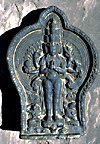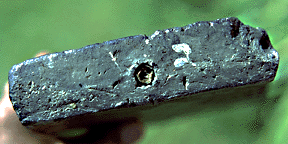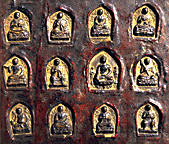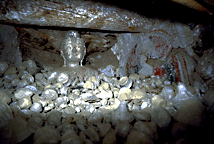by Juan Li
Text and images © Juan Li and Asian Arts: not to be reproduced without permission



by Juan Li



Left to right
High copper bronze tsa-tsa mould from central Tibet.
Large tsa-tsa of Avalokitesvara about 11.5 inches (29 cm) tall. This type was sometimes printed in large quantities to fill a room around a large prayer wheel or shrine. Collected in Nepal.
The empowerment scroll inserted at the base of Avalokitesvara tsatsa in previous image.


Altar made from a set of uniform molds which may have been prepared together to function as a lineage mandala. Tibet.



The finished product.
Carefully placing the tsa-tsa on a board to dry. Since the amount of sunlight in the mountains is limited the board is used to move the tsa-tsa around following the sun.



Funeral tsa-tsa in broken stupa at Shey, Ladakh.
Tsa-tsa of different types left as offerings. The Buddha image has been submerged under the accumulated offerings. Photographed in 1977